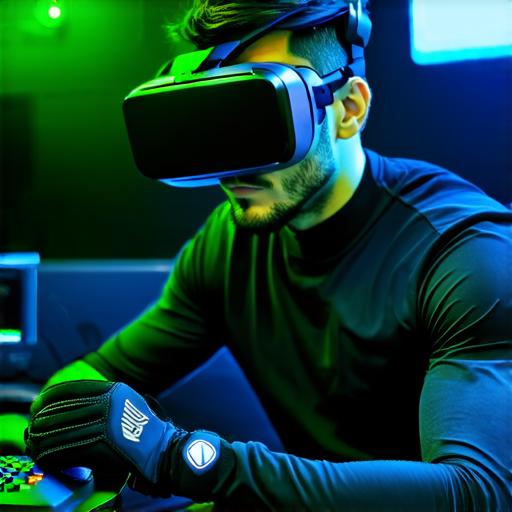
What are the latest developments in virtual and augmented reality technologies within the gaming industry?
Virtual and augmented reality (VR and AR) technologies have been rapidly evolving in recent years, with significant advancements being made in the gaming industry. These immersive technologies provide players with a new level of engagement and interactivity that was previously unimaginable. In this article, we will explore some of the latest developments in VR and AR technologies within the gaming industry and how they are transforming the way we experience games.
Virtual Reality (VR)
Virtual reality technology has come a long way since its inception in the 1960s. Today, it is widely used in the gaming industry to create highly immersive experiences for players. VR devices such as Oculus Rift, HTC Vive, and PlayStation VR provide players with a fully immersive experience by tracking their movements and adjusting the environment accordingly.
One of the latest developments in VR technology is the use of haptic feedback. Haptic feedback allows players to feel physical sensations in virtual environments, adding another layer of immersion to the gaming experience. For example, the HTC Vive Pro Eye uses a combination of eye tracking and facial recognition to provide players with a more natural interaction with virtual environments.
Another development in VR technology is the use of wireless headsets. The Oculus Quest 2 is a prime example of this technology, providing players with a fully wireless experience that eliminates the need for cables and wires. This makes it easier for players to move around and interact with virtual environments without any restrictions.
Augmented Reality (AR)
Augmented reality technology has also been making significant strides in the gaming industry. AR devices such as the Samsung Galaxy S21 Ultra, which uses an in-display camera and LiDAR sensor to create an AR experience, provide players with a new level of interactivity by overlaying digital content onto the real world.

One example of AR technology in gaming is the use of AR markers in mobile games. These markers allow players to interact with virtual objects in real-world environments, adding a new level of engagement and immersion to the gameplay experience.
Another development in AR technology is the use of 5G networks. With faster internet speeds and lower latency, 5G networks enable more complex and interactive AR experiences that were previously impossible. For example, the upcoming Pokémon Go+ game will require a 5G network to provide players with real-time updates and a smoother gaming experience.
Case Studies
One of the most impressive examples of VR technology in gaming is the development of the Beat Saber game for Oculus Rift. This game uses a combination of hand tracking and haptic feedback to create an immersive rhythm game experience that has become incredibly popular among gamers.
Another example of AR technology in gaming is the use of AR markers in the mobile game Ingress. This game uses physical markers in real-world environments to create a virtual world that players can interact with using their smartphones.
Personal Experiences
As a virtual reality developer, I have had the opportunity to work on several VR projects. One of the most exciting experiences was developing a VR escape room game for the Oculus Rift. The game required players to solve puzzles and riddles in a fully immersive virtual environment, which provided a unique level of engagement and interactivity that was unmatched by traditional gaming experiences.
Another personal experience was attending the Electronic Entertainment Expo (E3) in 2019, where I had the opportunity to try out several VR and AR games. One of the most impressive experiences was trying out the Oculus Quest 2 wireless headset, which provided a seamless and immersive gaming experience without any wires or cables.
Expert Opinions
According to Mark Zuckerberg, CEO of Facebook (which owns Oculus), virtual reality technology will continue to revolutionize the way we experience games in the future.


